Photo Gallery for Caloptilia ostryaeella - Ironwood Leafcone Moth | 34 photos are available. Only the most recent 30 are shown.
|
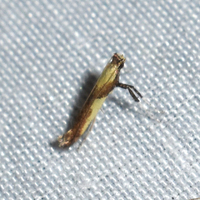 | Recorded by: Jeff Niznik on 2024-07-14
Watauga Co.
Comment: | 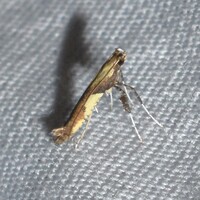 | Recorded by: David George, Jeff Niznik on 2024-06-10
Chatham Co.
Comment: |
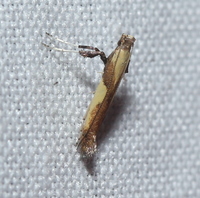 | Recorded by: David George, Jeff Niznik on 2024-06-01
Chatham Co.
Comment: | 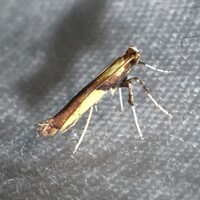 | Recorded by: David George, Jeff Niznik on 2024-05-25
Chatham Co.
Comment: |
 | Recorded by: Jeff Niznik on 2023-06-16
Durham Co.
Comment: | 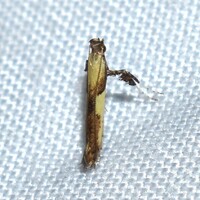 | Recorded by: Jeff Niznik on 2023-06-16
Durham Co.
Comment: |
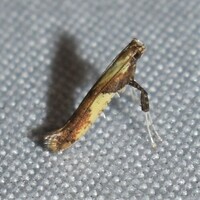 | Recorded by: Jeff Niznik on 2023-05-31
Durham Co.
Comment: | 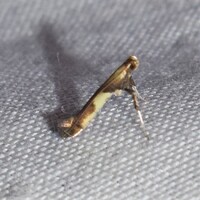 | Recorded by: David George, Jeff Niznik on 2023-05-12
Durham Co.
Comment: |
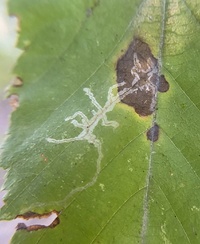 | Recorded by: David George, Becky Watkins on 2022-10-09
Durham Co.
Comment: | 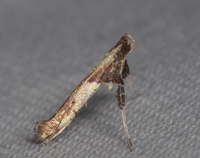 | Recorded by: John Petranka on 2022-08-09
Watauga Co.
Comment: |
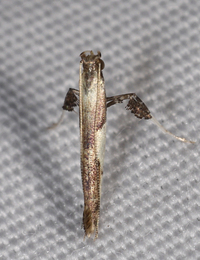 | Recorded by: John Petranka on 2022-08-09
Watauga Co.
Comment: |  | Recorded by: John Petranka on 2022-07-30
Orange Co.
Comment: |
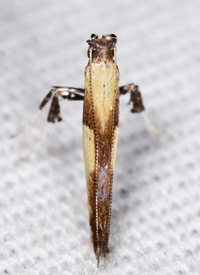 | Recorded by: John Petranka on 2022-07-30
Orange Co.
Comment: |  | Recorded by: Dean Furbish on 2022-07-04
Wake Co.
Comment: |
 | Recorded by: John Petranka on 2022-06-15
Orange Co.
Comment: | 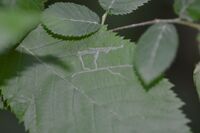 | Recorded by: Tracy S. Feldman on 2022-06-06
Orange Co.
Comment: |
 | Recorded by: Jim Petranka, Becky Elkin and Bo Sullivan on 2021-08-02
Ashe Co.
Comment: Unoccupied mine was on Hop-hornbeam. |  | Recorded by: J. B. Sullivan on 2020-10-23
Ashe Co.
Comment: A view of the autumn color morph of this species. |
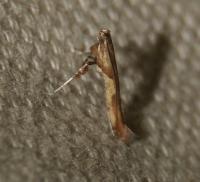 | Recorded by: Vin Stanton on 2020-07-15
Buncombe Co.
Comment: |  | Recorded by: Stephen Hall on 2020-07-13
Orange Co.
Comment: |
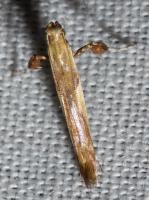 | Recorded by: Stephen Hall on 2020-07-13
Orange Co.
Comment: | 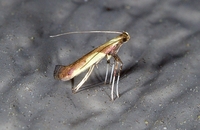 | Recorded by: Jim Petranka and Becky Elkin on 2019-08-01
Madison Co.
Comment: A summer form adult. |
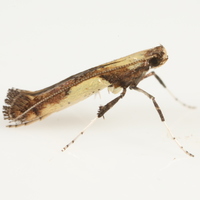 | Recorded by: Tracy S. Feldman and Charley Eiseman on 2019-05-31
Wake Co.
Comment: A summer form adult that was reared from larva found in a leaf roll on Ostrya virginiana. | 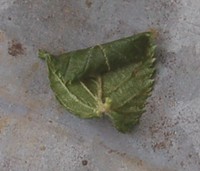 | Recorded by: Tracy S. Feldman on 2019-05-10
Wake Co.
Comment: A leaf roll on Ostrya virginiana; a larva was present inside (see companion photo). |
 | Recorded by: Tracy S. Feldman on 2019-05-10
Wake Co.
Comment: A view from the upper leaf surface of Ostrya virginiana that has a leaf roll that is used as a feeding shelter; a larva was present inside (see companion photo). | 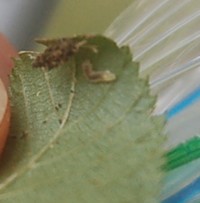 | Recorded by: Tracy S. Feldman on 2019-05-10
Wake Co.
Comment: A view of a larva that was inside of a rolled leaf tip of Ostrya virginiana. |
 | Recorded by: Tracy S. Feldman on 2019-05-03
Wake Co.
Comment: An empty mine on Ostrya virginiana. |  | Recorded by: Tracy S. Feldman on 2019-05-03
Wake Co.
Comment: An empty mine on Ostrya virginiana. |
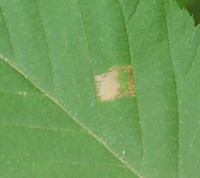 | Recorded by: Tracy S. Feldman on 2019-05-03
Wake Co.
Comment: An empty mine on Ostrya virginiana. | 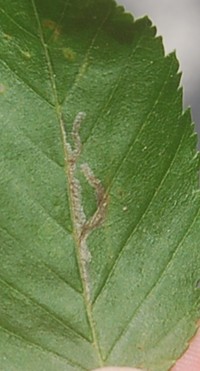 | Recorded by: Tracy S. Feldman on 2018-05-25
Wake Co.
Comment: A view of a leaf mine on the upper leaf surface of Ostrya virginiana. Note the two finger-like projections that extend from the main mine. |
|